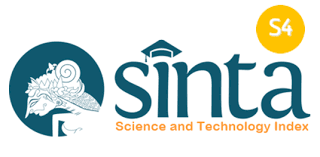SPATIAL ANALYSIS AND RISK FACTORS OF LEPTOSPIROSIS IN INDONESIA. A SYSTEMATIC REVIEW

Downloads
Leptospirosis is a disease that often occurs in tropical climates and has spread widely in advance of the earth including Indonesia. The purpose of the study is to provide some information on review studies on spatial analysis and risk factors for leptospirosis events that have been studied in Indonesia. This study used the review study method by identifying, recording and analyzing from previously studied research from 14 scientific articles related to the incidence of leptospirosis. The results of the study based on the review study that has been carried out obtained that the mapping is carried out by buffering and the pattern of spreading disease events in Indonesia is spread unevenly and the most influential risk factors in the distribution of leptospirosis cases in Indonesia are a significant relationship with variables related to the p value = 0.001 and having sewer conditions, the presence of rats , the presence of rice fields and the presence of rivers from the case house, age, gender, occupation, landfill, standing water, pets against leptospirosis incidence or greater or value affected by Leptospirosis event . Risk factors for leptospirosis events include age, gender, occupation, the presence of rats, landfills, puddles, pets, sewer conditions for the incidence of leptospirosis
Copyright (c) 2022 KHAIRA ilma ILMA, martini martini, Mursid Raharjo Mursid Raharjo

This work is licensed under a Creative Commons Attribution-ShareAlike 4.0 International License.
- The journal allows the author to hold the copyright of the article without restrictions.
- The journal allows the author(s) to retain publishing rights without restrictions.
- The legal formal aspect of journal publication accessibility refers to Creative Commons Attribution Share-Alike (CC BY-SA).
- The Creative Commons Attribution Share-Alike (CC BY-SA) license allows re-distribution and re-use of a licensed work on the conditions that the creator is appropriately credited and that any derivative work is made available under "the same, similar or a compatible license”. Other than the conditions mentioned above, the editorial board is not responsible for copyright violation.































